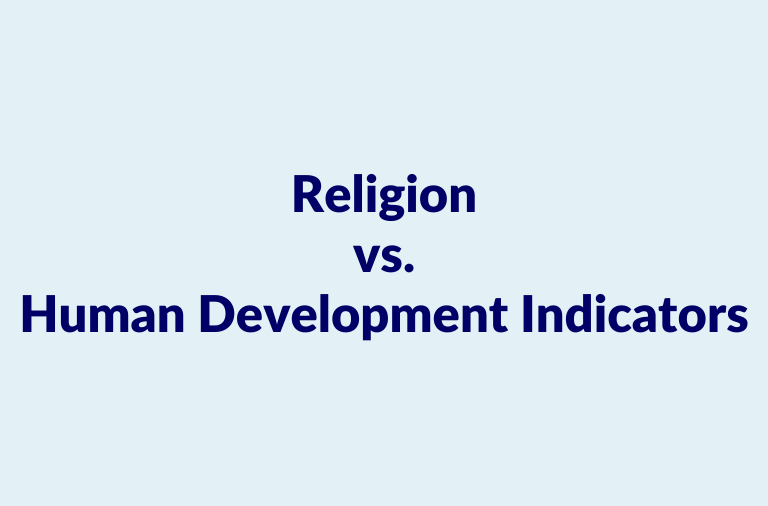Summary

Graph 1:
Countries with more people who said religion is very important in their daily life lags in the Human Development Index (HDI).
Graph 2:
Countries with more irreligious people lead in the Inequality-adjusted Human Development Index (IHDI).
About the HDI and poll data
I have plotted these graphs based on data collected from the United Nations Development Program (UNDP) and Gallup polls.
HDI
The Human Development Index (HDI) is a statistical index that ranks countries based on three important indicators of human development, like life expectancy, education levels, and per capita income indicators of people in different countries.
IHDI
The UNDP introduced the Inequality-adjusted Human Development Index (IHDI) in 2010 to adjust the HDI after considering inequalities in the above-mentioned three dimensions. HDI can be viewed as an index of average achievements in human development dimensions. The IHDI is the level of human development when the distribution of achievements across people in society is accounted for. If the IHDI is equal to the HDI, there is no inequality in the distribution of achievement across people in society, but it falls below the HDI as inequality rises.
In 2022, India ranked 132 out of 192 countries in HDI and 122 in IHDI.
Gallup Poll
I used the Gallup research data to know the percentage of irreligious people in a country and the importance of religion in different countries. Gallup, Inc. is an American analytics and advisory company.
Gallup asked “Is religion important in your daily life?” the respondents of the poll it conducted to know the importance of a religion for them.
Understanding the graphs
Pearson’s correlation coefficient ( r ) measures the strength of the relationship between two variables. In this case, we are trying to understand the relationship between human development indicators and religion.
‘r’ value ranges from +1 to -1.
+/- 1.0 = Perfect positive/negative relationship.
+/- 0.8 to +/- 1.0 = Very strong positive/negative. relationship.
+/- 0.6 to +/- 0.8 = Strong positive/negative relationship.
+/- 0.4 to +/- 0.6 = Moderate positive/negative relationship.
+/- 0.2 to +/- 0.4 = Weak positive/negative relationship.
+/- 0.0 to +/- 0.2 = Very weak positive/negative or no relationship.
Graph 1 has a ‘ r’ value of 0.8. It indicates there is a very strong negative relationship between giving importance to religion in daily life and poor human development (HDI).
Graph 2 has a ‘r’ value of 0.64. It indicates there is a strong positive relationship between more irreligious people and good human development (IHDI).
I plotted the graphs for the following cases too, but I don’t want to complicate this post for readers who aren’t from a mathematics background.
- “More importance to religion” vs HDI – UNDP and Gallup 2010 data (‘r’ value of 0.7)
- Irreligious vs Social Progress Index -UNDP and Gallup 2022 data (‘r’ value of 0.6)
You can access this data in this Google Sheet: bit.ly/3tVrAGH



